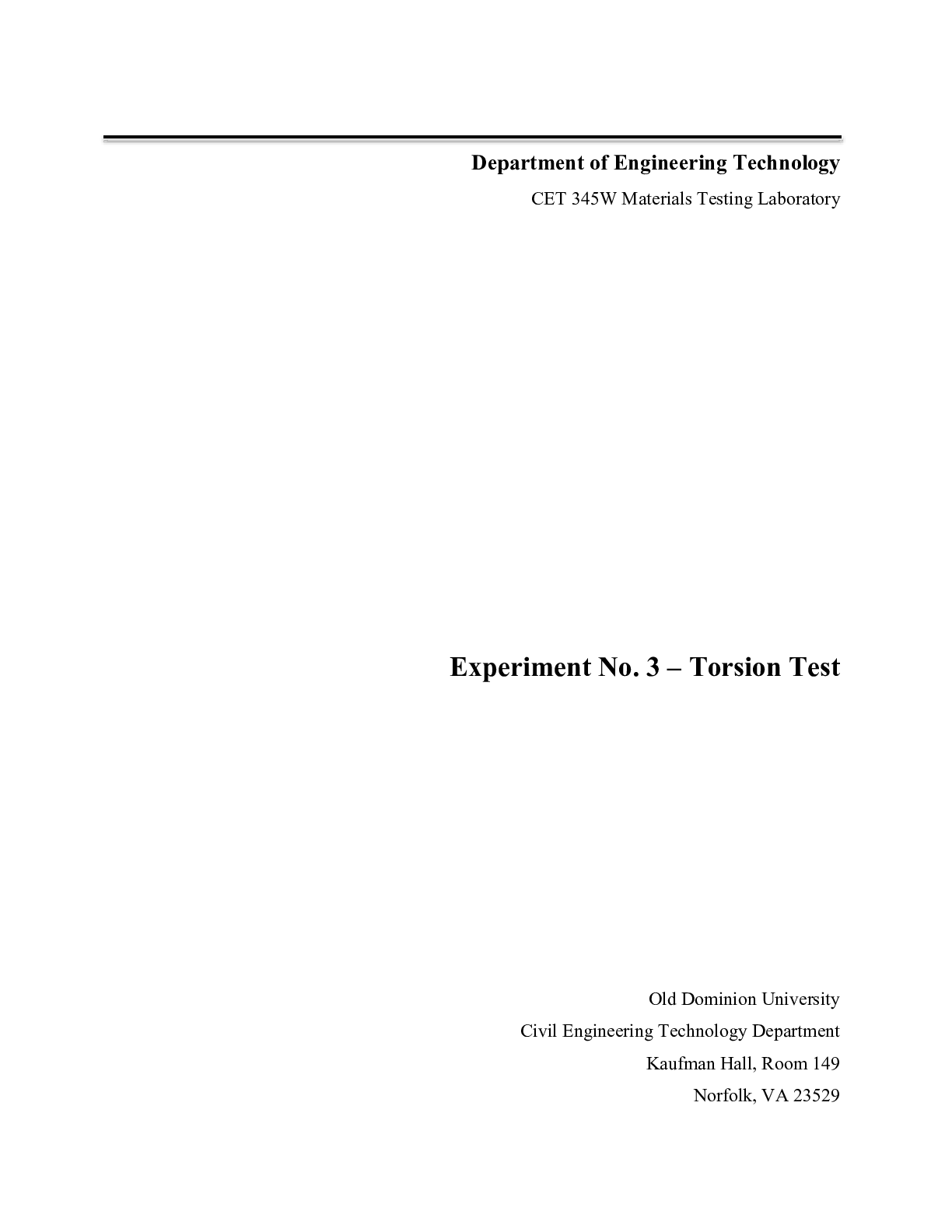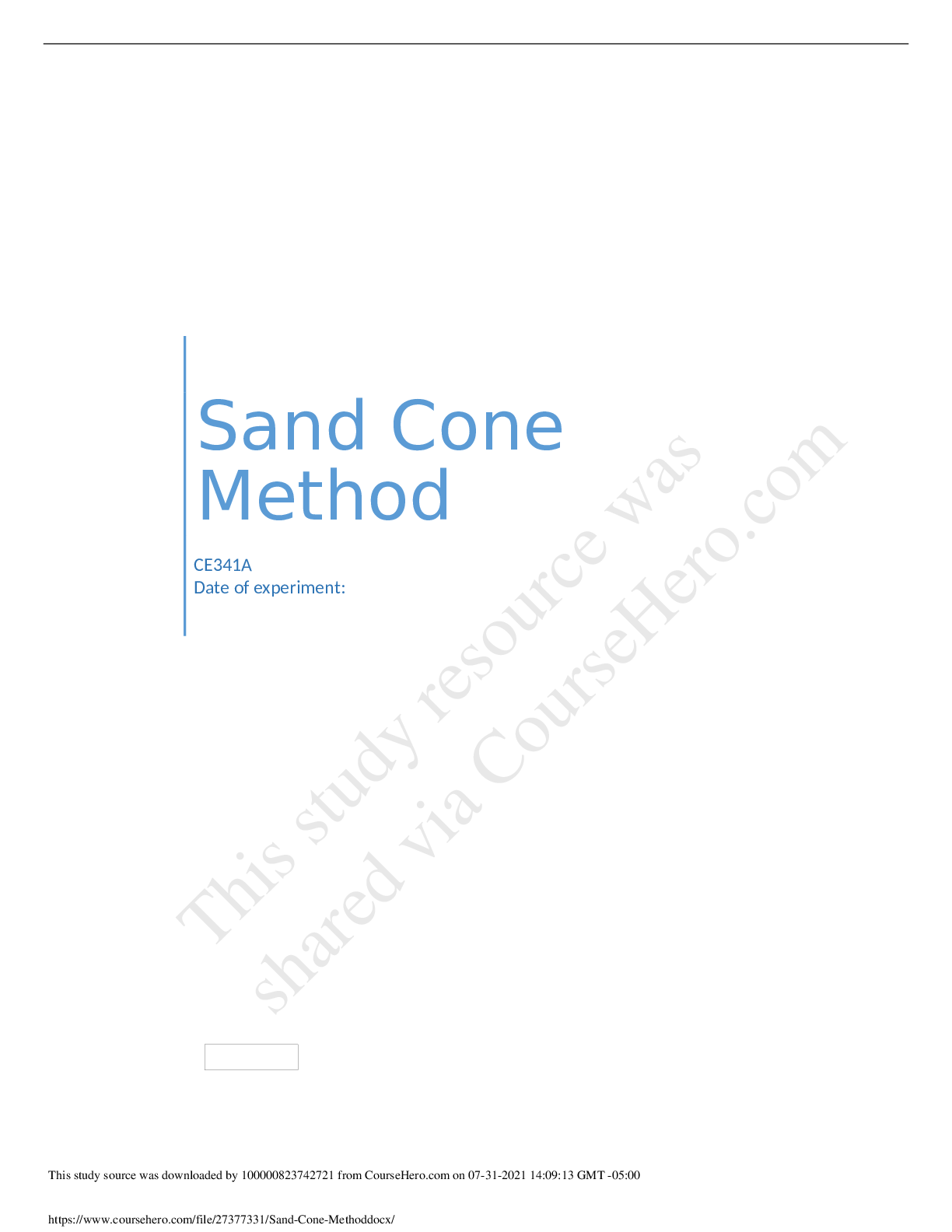Civil Engineering > Lab Report > Sieve Analysis full Lab report (All)
Sieve Analysis full Lab report
Document Content and Description Below
VI. OBJECTIVES The objectives of this laboratory report are : 1. To determine the grain-size distribution of soil. 2. To identify if the total mass from the beginning will also be the total mass a... fter the experiment. 3. To determine the percent of the retained soil in each sieve. 4. To compute the percent finer in each opening. VII. THEORETICAL BACKGROUND Test sieving is a sieve analysis for determining whether the distribution of the particular sizes in a sample fulfills certain requirements. The suitability of a soil for a particular use in construction is often dependent in the distribution of gain sizes in the soil mass. The experiment is carried out to determine a good distribution of aggregate by using sieve and comparing the results obtained. Sieve analysis is laboratory test procedure in which particles will move vertically or horizontally through sieve mesh. Depending on the needs and particle material, different sieving methods are available for the application. They are manual sieving method, mechanical sieving method, dry sieving method and wet sieving method. The following are the formulae used in this report: Total masssample before sieve– Totalmass sampleafter sieve 12 C=¿ ) Percentage error: %E = T−E T ×100 1 Corrected Mass: Corrected Mass=Mass Retained+C % Retained: Retained= MassRetained Total Mass x100 % Passing: Passing=100−∑ retained VIII. MATERIALS USED Container / Plastic for the retained soil every sieve box. Digital Weighing Scale Pen and Tape for labelling Mortar and Pestle Set of Sieve Pan Brush Oven for drying of soil Dry Soil Sample IX. PROCEDURE: Preparation: 1. Dry the soil sample (sun dry and oven dry using the oven) 2. Place the dried soil sample in a container. 1 Before experiment: 1. Prepare the materials needed in the experiment. 2. Use a brush to wipe off the dirt from the set of sieve. 3. Place the dried soil sample to the pan. 4. Weigh each sieve. Record the data. 5. Weigh the soil sample. It should be 500 grams. 6. Grind the soil sample using the mortar and pestle. 7. Place the soil sample in the set of sieve (from bigger opening to smaller one). 8. Shake the sieve for 10 to 15 minutes. 9. Now, weigh each sieve with the soil retained. Record the data. 10. Make sure that the loss in the total mass of the soil is minimal or small. It should be at least with a loss of 1 to 5 grams. 11. Place the soil retained in each sieve in separate plastics or containers and label them using the pen and tape I. DISCUSSION OF RESULT The soil obtained was thoroughly dried through the use of the sun’s heat and the oven. Before the sieving, the dried soil was grinded using mortar and pestle to make sure the soil can easily pass through each sieve. The sieving was done manually for 15 minutes due to the laboratory not having sieve shakers. After the soil was sieved, the sample retained was weighed on each sieve including the weight retained in the pan. [Show More]
Last updated: 2 years ago
Preview 1 out of 13 pages

Buy this document to get the full access instantly
Instant Download Access after purchase
Buy NowInstant download
We Accept:

Reviews( 0 )
$10.00
Can't find what you want? Try our AI powered Search
Document information
Connected school, study & course
About the document
Uploaded On
Jul 31, 2021
Number of pages
13
Written in
Additional information
This document has been written for:
Uploaded
Jul 31, 2021
Downloads
0
Views
84









.png)













